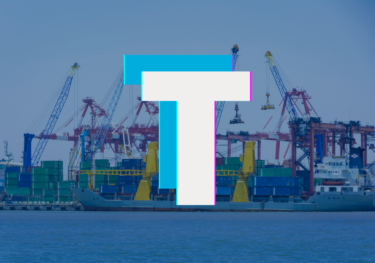Techonomics Talks | 16 Apr 2024
How Asia’s supply chains are changing | Techonomics Talks

Thang Nguyen
Ph.D., Lead Economist, Macro Consulting

Global supply chains have continued to expand, despite talk of deglobalisation and nearshoring. US and Japan have started to de-couple from China, but other G7 countries grow more dependent on Chinese inputs. Several “hotspots” are emerging across Asia with multiple winning formulas.
In our latest Techonomics Talks video, Thang Nguyen-Quoc, Lead Economist, examines the deglobalisation myth and how Asia’s supply chains are changing.
Click here to check out previous Techonomics Talks episodes.
Strategic insights at the intersection of technology and economics
Oxford Economics offers comprehensive data-driven insights and consulting services that empower both tech companies and their customers to make strategic decisions in today’s dynamic market. With a foundation in economics, we enable you to grasp technology’s impact, understand market shifts, and navigate external influences effectively.
How can we help you?
Whether quantifying risks, identifying growth opportunities, or becoming a thought leader, Oxford Economics equips you to not only meet stakeholder expectations but also exceed them, fostering growth and bolstering reputation.
Our data-driven approach ensures that every decision is well-informed, turning challenges into steppingstones for innovation and success in an ever-evolving landscape.
Sign up now for technology insights straight to your inbox or request a call back to discuss how we can help you.

The Deglobalisation Myth: How Asia’s supply chains are changing
Global supply chains have continued to expand, despite talk of deglobalisation and nearshoring.
There have been a lot of concerns surrounding deglobalisation, nearshoring, friend shoring and decoupling that affect global supply chain networks. A recent Oxford Economics study, commissioned by the Hinrich Foundation find that this narrative is not so simple. For example, analyzing bilateral flows of trade in intermediate goods, we find that global trade have grown by 6% a year between 2018 and 2022.
We also find evidence of decoupling, but China only decoupled from US and Japan. In contrast, China has actually become more important for international sourcing in major G7 countries such as the United Kingdom and Germany. Among the major world regions, we find the most dynamism in Asia, and particularly we find seven hot spot countries, with exports of intermediate goods growing by more than 6% annually during the last five years.
And Vietnam and Indonesia register a double digit growth annually. These hot spots follow very different pathways with respect to US-China decoupling. Vietnam and Taiwan have become more important for both the US and China. In contrast, India has become more important for the US, but less so for China. Now, these hotspot countries also vary a lot with respect to their natural resource offering, technological readiness and FDI attractiveness. Their diversity suggests that there is more than one winning formula for countries to navigate this changing landscape of global supply chain. And as we go forward, we expect the geography of Asia’s supply chain to continue to evolve due to multiple factors. First, geopolitics. Second, the return of industrial policy and environmental policies such as the EU Carbon Border Adjustment Mechanism, which affect trade.
And thirdly, why we have mostly focus on geopolitics and public policies, economics matter too. Enterprises benefit from co-locating in close proximity because they can share resources, find better matches in skills, suppliers, customers and benefit from innovations. Countries which managed to gain a critical mass of enterprises during this reconfiguration of global supply chain will continue to grow well into the future.
Thank you.
Tags:
